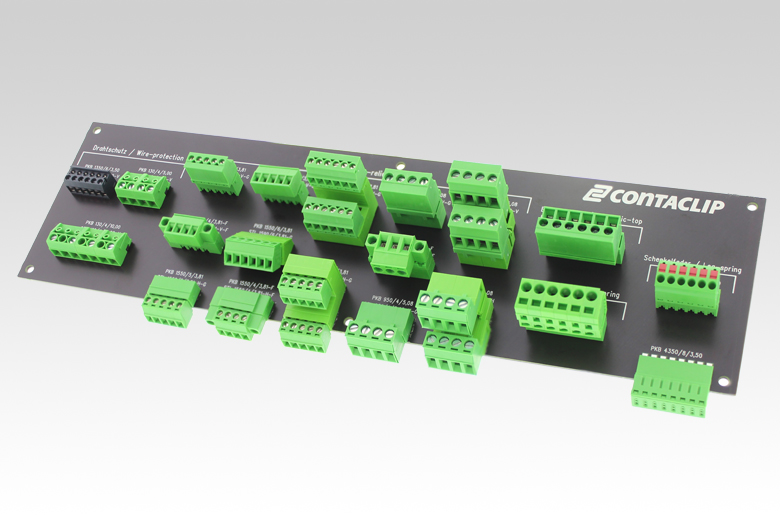- All
- Product Name
- Product Keyword
- Product Model
- Product Summary
- Product Description
- Multi Field Search
Views: 65 Author: Site Editor Publish Time: 2023-06-13 Origin: Site
SMT (Surface Mount Technology) terminal blocks are used to connect and transmit signals between different components on a printed circuit board (PCB). These terminal blocks typically have metal contacts that are plated with a thin layer of a conductive material to ensure reliable signal transmission. The plating material used can affect the performance of the terminal block and its compatibility with other components on the PCB. In this article, we will explore the most common plating options for SMT terminal blocks, including gold, tin, and other materials.
Gold Plating
Gold is one of the most common plating materials used for SMT terminal blocks. Gold has several advantages over other materials, including high conductivity, excellent corrosion resistance, and low contact resistance. Gold plating is also highly reliable and has a long life span, which makes it ideal for use in high-performance applications. Additionally, gold plating is highly compatible with other materials used in electronic device manufacturing, making it a popular choice among designers and manufacturers.
Tin Plating
Tin is another common plating material used for SMT terminal blocks. Tin plating has several advantages, including low cost and ease of plating. Tin plating also has good solderability, making it easy to use with other components on the PCB. However, tin plating has some drawbacks, including low wear resistance and poor corrosion resistance, which can limit its suitability for certain applications.

Other Plating Materials
In addition to gold and tin, there are other plating materials that can be used for SMT terminal blocks. These include palladium, nickel, silver, and copper. Each of these materials has its own advantages and disadvantages, and the choice of plating material will depend on the specific application and performance requirements.
Palladium is a popular alternative to gold plating, as it has similar conductivity and corrosion resistance properties. However, palladium is more expensive than gold, which can limit its use in some applications.
Nickel is another common plating material that offers good corrosion resistance and wear resistance. However, nickel has relatively low conductivity and can cause contact resistance issues, which may limit its suitability for certain applications.
Silver is an excellent conductor and offers good corrosion resistance. However, silver is relatively expensive, and its use may be limited by cost considerations.
Copper is an inexpensive plating material that offers good conductivity and corrosion resistance. However, copper is prone to oxidation, which can limit its suitability for certain applications.
In conclusion, the choice of plating material for SMT terminal blocks will depend on the specific application and performance requirements. Gold plating is a popular choice due to its high conductivity, corrosion resistance, and compatibility with other materials. Tin plating is a lower-cost alternative but has some limitations in terms of wear and corrosion resistance. Other plating materials, such as palladium, nickel, silver, and copper, offer different advantages and disadvantages and may be suitable for certain applications. Careful consideration of the plating options is necessary to ensure optimal performance and reliability of SMT terminal blocks in electronic devices.
A terminal block is a compact, insulated base with metal contacts that lets you clamp, join, and distribute conductors without soldering. If you’ve ever routed power to a drive, brought sensor leads into a controller, or handed off field wiring to a PCB, you’ve used one. Understanding what is a term
As a Engineer ,It is very important to choose globally recognized premium terminal blocks .these manufacturersas below: Phoenix Contact, WAGO, Weidmüller, Eaton, Molex, Amphenol, Harting, and Shanye Electronics (subsidiary of Kefa Electronics). These industry leaders collectively dominate the $4.6
This article covers the technical features of spring-loaded and push-in terminals, and both the advantages and disadvantages of these technologies when it comes to installation practices, commissioning, footprint and authorisation for the North American market. Why do we need spring terminal block ?
Wiring a terminal block correctly is a fundamental skill in electrical work, ensuring safe and reliable connections. This article will help you to understand the essential steps, from preparing your wires to securing them properly within various terminal block types.ContentWhat are Terminal Blocks?R
What is terminal block ?terminal block, also known as a connection terminal, is a modular block used in electrical and electronics systems to connect and secure electrical wires or cables. It serves as a convenient and organized way to make electrical connections, whether for power distribution, sig
Terminal electronics is the key point at which a conductor from a electronic component, device or network comes to an end.Terminal may also refer to an electrical connector at this endpoint, acting as the reusable interface to a conductor and creating a point where external circuits can be connected